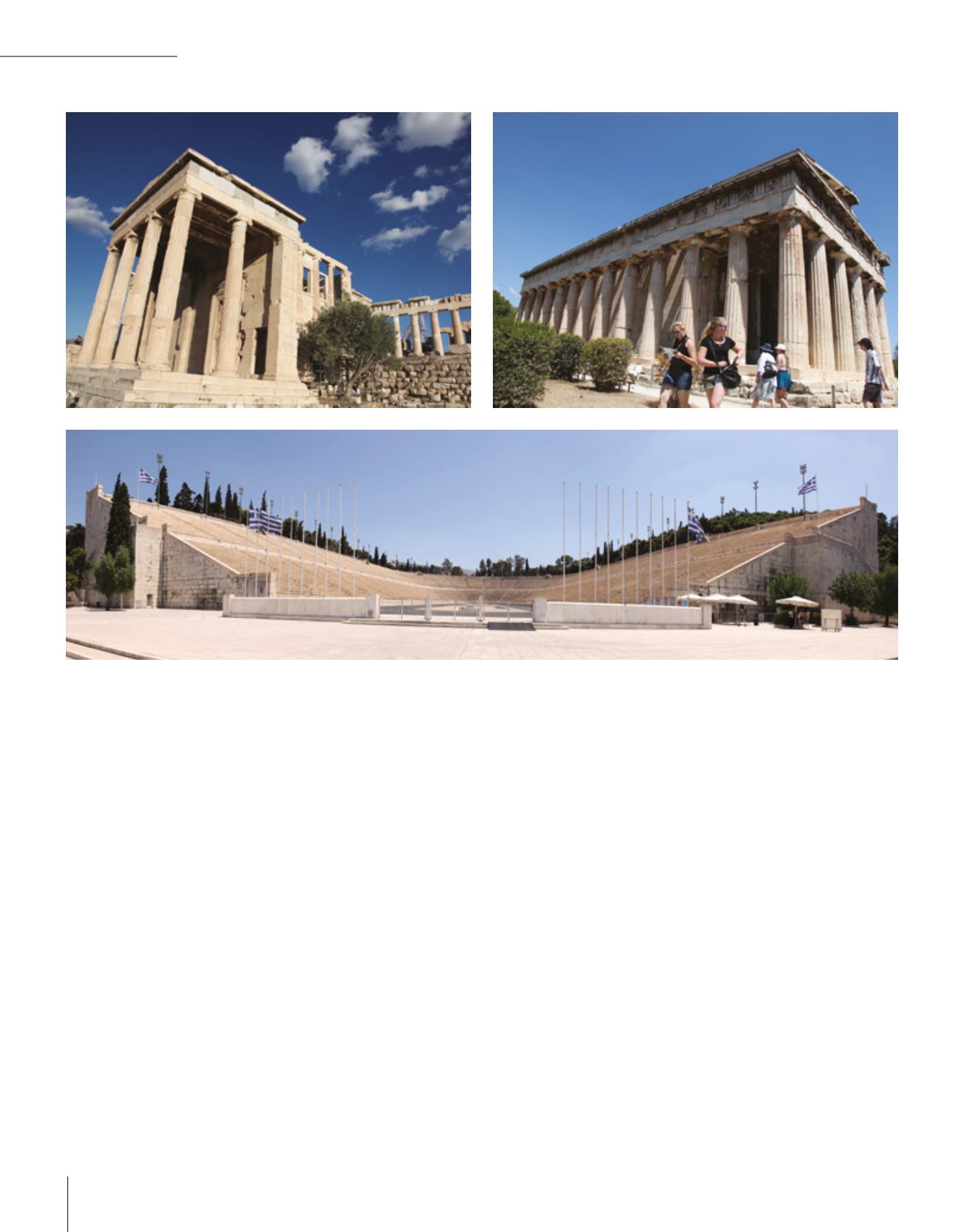
120
uzaktaki yakın
so far so close
ediyor. Eserler üç katta
sergileniyor. Birinci katta
Akropolis’in yamaçlarından
çıkarılan tarihi eserler var.
Akropolis’in zaman içerisinde
uğradığı değişimi gösteren
maketler ve video sunumları
adaptasyon açısından
önemli. Sanki Akropolis’e
tırmanıyormuş hissi ile uzun
ve eğimli bir koridordan yukarı
çıktığınızda Nike ve Erectheion
tapınaklarına ait heykeller,
frizler ve Erekhtheion’un
orjinal karyatid heykelleri
ile bu tapınakların maketleri
karşılıyor sizi. Büyük salondaki
heykel ve büstler bir arada
gerçekten etkileyici. Üstteki
balkondan araya serpiştirilmiş
ziyaretçiler ve heykellerin
birlikteliği aradan geçen
bin yılların azlığını, zamanın
izafiyetini hatırlatır türden
bir manzara. Parthenon’a
ayrılan en üst katta çepeçevre
Parthenon’un çatısında yer
alan süslemeli alınlıklarına ait
heykel ve rölyeflerden kalanlar
sergileniyor. British Museum
ve Berlin’de sergilenen
diğer parçalarını bekleyen
heykellerin yarım halleri biraz
iç burkan bir görüntü olsa
da yine de etkileyici. Ayrıca
koridoru dolaştığınızda da
sanki Parthenon’un etrafında
dolaşıyormuş hissi veren
alanda boydan boya cam
olan pencerelerden çok güzel
Atina ve Akropolis görüntüleri
almak da mümkün. Müzenin
2 ile 3.katı arasında bulunan
ara katında hediyelik eşya
mağazası ve restoranı var.
Restoranın manzarası müthiş.
Müzede bazı istina alanlar
dışında fotoğraf çekmek yasak
ama “her yasak delinmek
içindir” felsefesini işlerliğe
koymak ve sizler için flaşsız
birkaç görüntü almak gerekti.
Affola Acropolis Museum.
You will see two amphitheaters
as you climb towards the
Acropolis from the south side:
Dionysus and the Odeon of
Herodes Atticus. Spring festivals
were organized at the Dionysus
Theater that was built during the
5th century B.C. for Dionysus
which was the god of Wine
and Religious Ecstasy. This
theater that seats 13 thousand
people has reached its current
appearance after restorations
during the Roman period and
many viewers have come here
from all around Greece and even
Italy and Anatolia. A monument
was erected in the name of the
chorus that won the contests
organized here. The Lysicrates
Monument is among those that
have remained until today and
it dates back to 334 B.C. The
other theater, Odeon of Herodos
Atticus is the largest theater of
Acropolis. The theater that has
succeeded in staying intact until
today at the Southern side of the
hill is also the ancestor of the
term “Odeon”. This structure still
hosts classical music concerts
and theater festivals.
You will see a large gateway when
you pass the theaters: Propylaea
is a 20 m high city gateway that
was built in the 5th century B.C.
The large arches of the structure
have been made using Pentelic
marble. When you turn left from
the south side of Propylaea
you will see the Athena Nike
Temple. This temple is devoted
to Nike, Goddess of Victory
and was built after a victory of
Athenians over the Persians. It
is said to be consisting of an
ornamented pediment covered
with frescoes depicting the
victory of Greek soldiers and
six columns supporting it but
during the Ottoman period it
has been removed to make
way for a water battery. This
has also been removed during
the beginning of 19th century
and the temple has been rebuilt
using the remains of the original
structure. You will reach the
Acropolis plateau if you follow the
holy path and walk among the
columns. All Athens is below you


